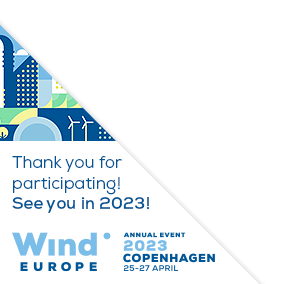Posters
Siblings:
ProceedingsProgrammeSpeakersPostersContent PartnersGlobal Markets TheatreWindTalks for InnovationProgramme Committee & Abstract ReviewersSpeaker's DashboardCome meet the poster presenters to ask them questions and discuss their work
Check the programme for our poster viewing moments. For more details on each poster, click on the poster titles to read the abstract. On Wednesday, 6 April at 15:30-16:15, join us on Level 3 of the Conference area for the Poster Awards!
PO164: Research on the measurement of yaw mis-alignment angle and an uncertainty analysis for a wind turbine using a LiDAR under complex flow condition
Keon-hoon Kim, Principal researcher, KIER
Abstract
In this measurement research, before the measurement for the yaw mis-alignment angle for a wind turbine using a nacelle based profiling LiDAR, the ground calibration procedure and calibration data are described and analysed. Through the ground calibration process of the LiDAR, calibration procedures on the geometrical attitude, laser beam geometry and RWS(radial wind speed) are accomplished in sequence. As final procedure of the ground calibration, RWS measurements with two met. mast of 12 m height and LiDAR on the same height are executed and analysed. As a result on RWS calibration with bin 7.4° wind direction, the expanded uncertainty of a profiling LiDAR is revealed as 3∼4% of the wind speed. In addition, considering the effect on the AEP of wind turbine which is considered as the most important factor in the operation of wind farm, the measurement results on the yaw mis-alignment of a wind turbine under the complex flow condition using the ground calibrated LiDAR are established and analysed for the uncertainty with the suggested uncertainty model. As final measurement results, a wind turbine operating under complex flow condition by the neighbor wind turbines have an average of 5.5° yaw mis-alignment angle and the 4.34°∼4.78° of measurement uncertainty in the main wind direction which many measurement data are capable of gathering. The minimization of the yaw mis-alignment angle should gain the improvement of AEP and the reduction of skewed operating loads of the wind turbine for extended fatigue life.










Follow the event on: